Gold Treasures From The Land Of Ancient Colchian Culture In Georgia
A. Sutherland - AncientPages.com - The wealth of sophisticated, ancient goldsmithing of the Colchian Culture is enormous.
Necklace from Vani dated to 5th-4th century BC. Gold, weight: 88.968 g. The neclase is form of 56 crouching gazelles and 13 ribbed spacer beads. The animals were stamped in two halves and fused together. Ears and horns were added separately. Courtesy of the Georgian National Museum, Tbilisi.
The treasures of Colchis are associated with the famous myth, known in Greek mythology as the destination of the Argonauts' expedition to Colchis in their quest for the Golden Fleece.
The culture dates to the second half of the 3rd millennium BC and the first half of the 1st millennium BC.
Colchis, the ancient Georgian kingdom in Western Georgia, is legendary as a region abundant with gold. It has been known for centuries, and it is finally confirmed by the excavations of a series of rich ancient burials and other discoveries at the site of the town of Vani (now Imereti region).
Spectacular Gold Jewelry Of Colchis
Colchis was a highly developed culture, and so was their spectacular gold jewelry.
Necklace from Vani. Vani dated to 5th century BC. Gold, weight: 85.905 g.
The necklace is made up of thirty-one pendants in the form of charming turtles, with the eyes of the thirty small ones were done with glass inlay, and the large ones are made of gold. Their carapaces are decorated with granulation. (Found in Tomb 11) Image credit: Georgian National Museum, Tbilisi.
In the village of Sairkhe, located in western Georgia, 200 km from the Black Sea Coast, the excavations conducted between 1982 and 1990 on fifteen hills surrounding the village revealed burials and metallurgical workshops dated to the first millennium BC.
The unearthed tombs belonged to aristocratic families and contained wooden sarcophagi sealed with iron nails and protected by a massive quantity of stones.
Colchian pendants, riders and horses on wheeled platforms, Georgian National Museum. Image credit: Jonathan Cardy - CC BY-SA 3.0
In one of the coffins, archaeologists found temple rings, diadems and earrings, necklaces, bracelets, and finger rings, all made of gold. Other grave goods included less elaborate artifacts like Greek clay and silver vessels.
Here, we mention only some exquisite, ancient examples of Colchis stunning gold adornments. Left in legacy by skilled Colchian artisans, these items represent the sophisticated, ancient art of goldsmithing, and can be admired at the Vani Archaeological Museum and the State Museum of Georgia, Tbilisi.
In ancient times, Colchis was a colony of the Greek city of Miletus, which became one of the twelve Ionian city-states of Asia Minor to form the Ionian League.
Clip Headdress decoration (H-6.5 cm; H-6.5 cm), 4 th century BC from Vani, Western Georgia, The Georgian National Museum's collection
The Greek sagas connected the fabulous Colchis - the land of gold and magic - with the mythical land of Aja.
"The legend of the heroic quest of Argonauts is one of our civilization's oldest and most widely known myths, and the Golden Fleece is probably the most enigmatic phenomenon. For more than 2000 years already, an enormous volume of scientific research and pieces of art has been dedicated to this legend, with little to no truly reliable information found." 1
"…The topic has been and is still being studied by historians, archaeologists, and writers, but no one has yet studied it from a geological point of view. In the meantime, the geological argumentation may well prove crucial, as far as if the Argonauts' voyage has really happened and if the Golden Fleece is somehow linked to the gold mining technology, that might mean that the Argonauts have carried out one of the first geological expeditions in the history of our civilization…." 1
Necklace with Bird Pendants 400-350 B.C. Georgian National Museum. Photo by Amiran Kiladze. Image via georgiaabout.com)
Researchers matched the geological findings with the existing Greek and Roman written sources. They concluded that 'the voyage of Argonauts, a small team of Greek mythological heroes to the ancient kingdom of Colchis appears to have really happened.'
The expedition probably took place before the eruption of the Santorini volcano, between 1570 and 1580 BC, and it is unlikely they could carry out an expedition of this scale after the disaster.
Colchian gold diadem. Image credit: Jonathan Cardy - (with thanks to the, Georgian National Museum for allowing photography - CC BY-SA 3.0 DEED
'We assert that the primary purpose of this mission was to obtain gold and gold mining technology from those working along the river sands of the Kingdom of Colchis.
'As for the Golden Fleece phenomenon, according to our research, it is connected with the sheepskin (fleece) technique of gold recovering, which later on resulted in the formation of the romantic concept of the Golden Fleece that has existed in the civilized world ever since Homer's time….' 1
Written by – A. Sutherland AncientPages.com Senior Staff Writer
Copyright © AncientPages.com All rights reserved. This material may not be published, broadcast, rewritten or redistributed in whole or part without the express written permission of AncientPages.com
Expand for referencesReferences:
Gorji D. Colchis and the Golden Fleece
Avtandil Okrostsvaridze, The Argonauts: A Modern Investigation of the Mythical "Gold Sands
Natia Abramia, Georgia - Culture Smart!: The Essential Guide to Customs & Culture
More From Ancient Pages
-
 Ephemeral Evidence Of Mediterranean Mobility – Boats, Migration, And The Central Mediterranean Passage In Focus
Archaeology | Dec 23, 2021
Ephemeral Evidence Of Mediterranean Mobility – Boats, Migration, And The Central Mediterranean Passage In Focus
Archaeology | Dec 23, 2021 -
 King Charles II Of England Banned Coffeehouses In 1675
Ancient History Facts | Jun 18, 2018
King Charles II Of England Banned Coffeehouses In 1675
Ancient History Facts | Jun 18, 2018 -
 Where Is The Grave Of Queen Boudica?
Ancient History Facts | Aug 15, 2017
Where Is The Grave Of Queen Boudica?
Ancient History Facts | Aug 15, 2017 -
 On This Day In History: Great Fire Of London Ends – On Sep 5/6, 1666
News | Sep 5, 2016
On This Day In History: Great Fire Of London Ends – On Sep 5/6, 1666
News | Sep 5, 2016 -
 On This Day In History: Edict Of Longjumeau Was Signed And Ended Second War of Religion – On Mar 23, 1568
News | Mar 23, 2017
On This Day In History: Edict Of Longjumeau Was Signed And Ended Second War of Religion – On Mar 23, 1568
News | Mar 23, 2017 -
 Mysterious Ancestor Of All Mammals Identified Through Genome Reconstruction
Archaeology | Sep 30, 2022
Mysterious Ancestor Of All Mammals Identified Through Genome Reconstruction
Archaeology | Sep 30, 2022 -
 Magnificent Ancient Artifacts Found In Bulgaria Last Year Go On Display
Archaeology | Feb 14, 2023
Magnificent Ancient Artifacts Found In Bulgaria Last Year Go On Display
Archaeology | Feb 14, 2023 -
 Why Is The Oseberg Ship Burial A Great Viking Mystery?
Vikings | Jan 22, 2024
Why Is The Oseberg Ship Burial A Great Viking Mystery?
Vikings | Jan 22, 2024 -
 Strange Ancient Mechanical Flying Animals – Mystery Of The Air Castle – Part 2
Featured Stories | Mar 31, 2020
Strange Ancient Mechanical Flying Animals – Mystery Of The Air Castle – Part 2
Featured Stories | Mar 31, 2020 -
 World’s Oldest Beer Factory Discovered In Abydos, Egypt
Archaeology | Feb 16, 2021
World’s Oldest Beer Factory Discovered In Abydos, Egypt
Archaeology | Feb 16, 2021 -
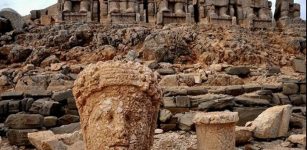 Kommagene Civilization And The Ancient City Of Perge
Civilizations | Jan 25, 2016
Kommagene Civilization And The Ancient City Of Perge
Civilizations | Jan 25, 2016 -
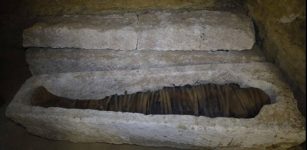 Tombs With Sarcophagi Of High Priests Including One Dedicated To Sky God Horus Unearthed In Egypt
Archaeology | Jan 31, 2020
Tombs With Sarcophagi Of High Priests Including One Dedicated To Sky God Horus Unearthed In Egypt
Archaeology | Jan 31, 2020 -
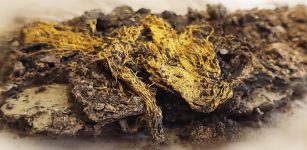 Unique Ancient Gold Cloth Found In The Necropolis Of Saint-Pierre-l’Estrier Is The Largest Antique Piece Found To Date
Archaeology | Aug 13, 2022
Unique Ancient Gold Cloth Found In The Necropolis Of Saint-Pierre-l’Estrier Is The Largest Antique Piece Found To Date
Archaeology | Aug 13, 2022 -
 The 5th Century BC Gela II Wreck Linked To Orichalco Cargo Salvaged In Sicily
Archaeology | Oct 8, 2024
The 5th Century BC Gela II Wreck Linked To Orichalco Cargo Salvaged In Sicily
Archaeology | Oct 8, 2024 -
 The Great Pyramid And Ancient Egyptian Knowledge Shed Light On Biblical Mysteries – Resurrection Of The Flesh – Part 1
Featured Stories | Nov 25, 2019
The Great Pyramid And Ancient Egyptian Knowledge Shed Light On Biblical Mysteries – Resurrection Of The Flesh – Part 1
Featured Stories | Nov 25, 2019 -
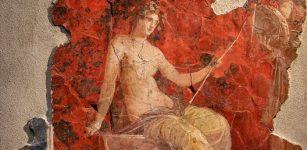 Never-Before-Seen Frescoes From Hadrian’s Time Unveiled At Ancient Roman Baths
Archaeology | Jun 27, 2022
Never-Before-Seen Frescoes From Hadrian’s Time Unveiled At Ancient Roman Baths
Archaeology | Jun 27, 2022 -
 Vatican Secrets – Dangerous Knowledge And Invention That Could Alter History
Featured Stories | Dec 14, 2018
Vatican Secrets – Dangerous Knowledge And Invention That Could Alter History
Featured Stories | Dec 14, 2018 -
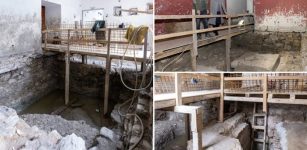 Unexpected Discovery Of Roman Baths Under Split City Museum In Croatia
Archaeology | Dec 7, 2023
Unexpected Discovery Of Roman Baths Under Split City Museum In Croatia
Archaeology | Dec 7, 2023 -
 Ancient Burial Tomb Of A Noble Mongol Warrior With Weapons Unearthed In The Moldavian Village
Archaeology | Aug 9, 2022
Ancient Burial Tomb Of A Noble Mongol Warrior With Weapons Unearthed In The Moldavian Village
Archaeology | Aug 9, 2022 -
 Mystery Of Doppelgangers And Spirit Doubles – From Ancient To Modern Times
Featured Stories | Feb 28, 2022
Mystery Of Doppelgangers And Spirit Doubles – From Ancient To Modern Times
Featured Stories | Feb 28, 2022






